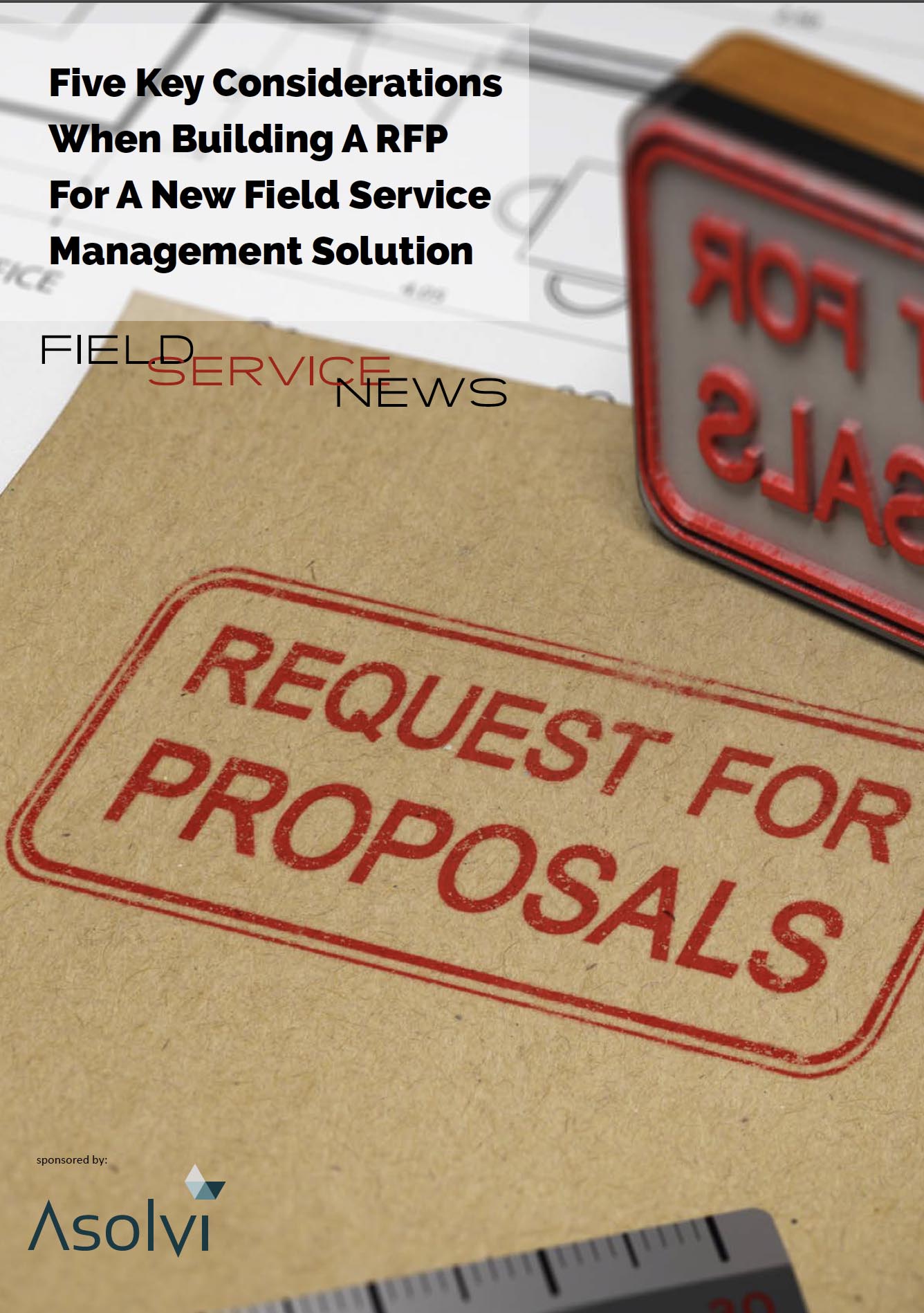White Paper: 5 Considerations for Building an FSM Request for Proposal (2018)
The implementation of a field service management solution whether it be the first time your organisation has implemented such a system, upgrading from a package system, or whether you are upgrading from an older legacy system is a hugely important stepping stone towards being able to meet the increasingly difficult demands of keeping both your customers and shareholders happy simultaneously…
It is a decision that you want to get right first time, yet surprisingly, many companies often find themselves a year or two into using a new system before they realise that it was perhaps not the solution that they actually needed – and they then either have to a) find workarounds, b) invest in custom development or even c) start the whole process again.
The first of these can lead to inefficient process and poor productivity, the second easily can become all too quickly a very costly exercise, whilst the third is, of course, both these and then some.
This is why it is crucial that you put the time aside to ensure that your organisation goes through the process of building a Request for Proposal (RFP) document – something an alarmingly large number of companies fail to do, expecting an ‘off-the-shelf’ solution to tick the boxes and then blame the solution when they discover it doesn’t a year or so in.
Building an RFP is a hugely important part of what should be a major investment and change management process within your organisation. When building your initial RFP, i.e. the document you give to prospective solution providers that outlines your needs and objectives, you are able to establish not only a firm understanding of what the challenges are that you are looking to resolve but also a reasonably wide range understanding of what is possible.
In this white paper, we will be giving you five fundamental points for consideration to help you ensure that your RFP gives you the very best chance of selecting a solution provider that will be able to work with you to deliver the right solution to help you improve efficiency in the mission-critical operations of field service.
White Paper: 5 Considerations for Building an FSM Request for Proposal (2018)
The implementation of a field service management solution whether it be the first time your organisation has implemented such a system, upgrading from a package system, or whether you are upgrading from an older legacy system is a hugely important stepping stone towards being able to meet the increasingly difficult demands of keeping both your customers and shareholders happy simultaneously…
It is a decision that you want to get right first time, yet surprisingly, many companies often find themselves a year or two into using a new system before they realise that it was perhaps not the solution that they actually needed – and they then either have to a) find workarounds, b) invest in custom development or even c) start the whole process again.
The first of these can lead to inefficient process and poor productivity, the second easily can become all too quickly a very costly exercise, whilst the third is, of course, both these and then some.
This is why it is crucial that you put the time aside to ensure that your organisation goes through the process of building a Request for Proposal (RFP) document – something an alarmingly large number of companies fail to do, expecting an ‘off-the-shelf’ solution to tick the boxes and then blame the solution when they discover it doesn’t a year or so in.
Building an RFP is a hugely important part of what should be a major investment and change management process within your organisation. When building your initial RFP, i.e. the document you give to prospective solution providers that outlines your needs and objectives, you are able to establish not only a firm understanding of what the challenges are that you are looking to resolve but also a reasonably wide range understanding of what is possible.
In this white paper, we will be giving you five fundamental points for consideration to help you ensure that your RFP gives you the very best chance of selecting a solution provider that will be able to work with you to deliver the right solution to help you improve efficiency in the mission-critical operations of field service.



